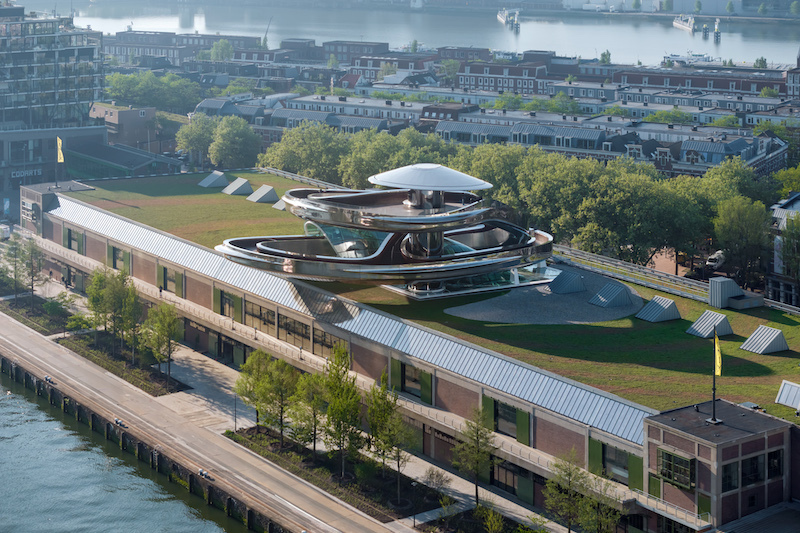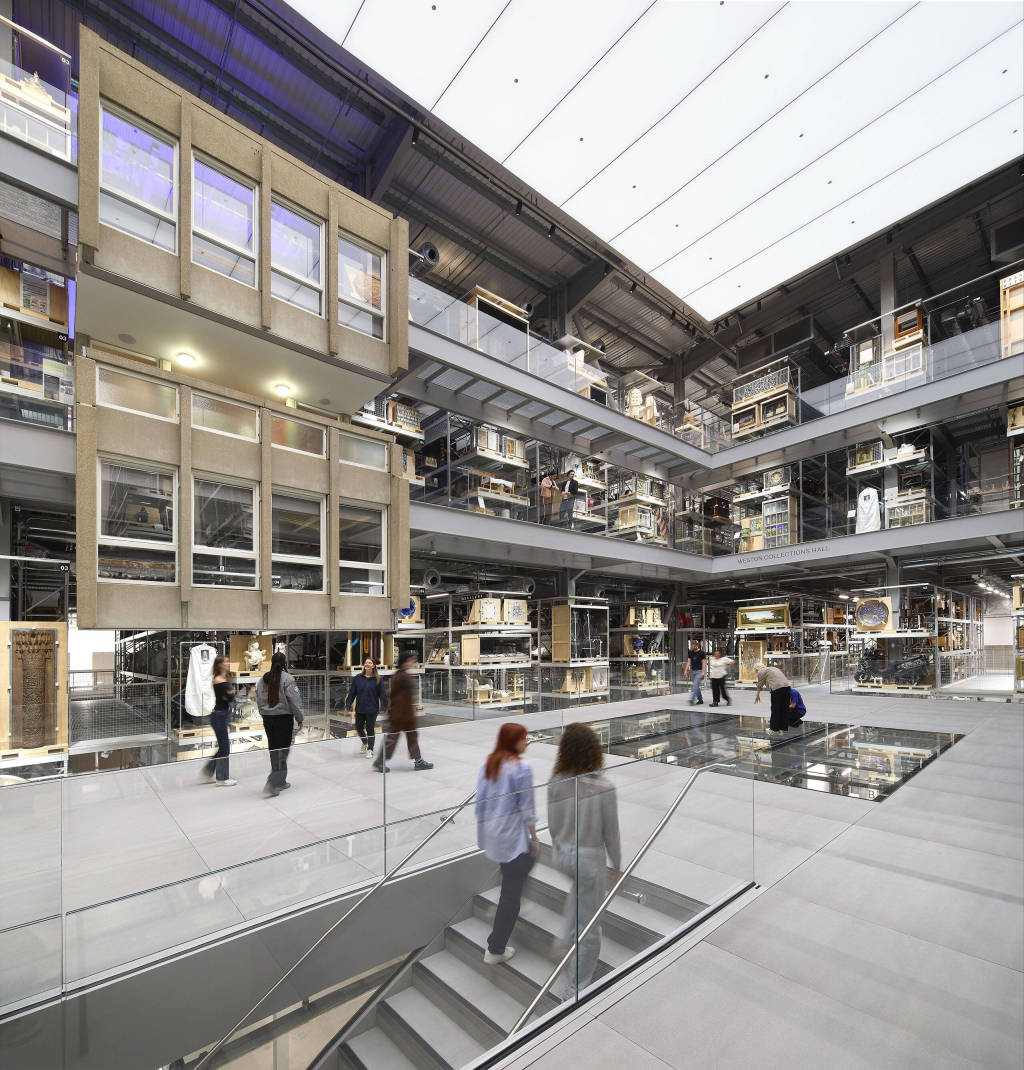
“All you have to do is look up the collection online, and if a piece is in stock, you can add it to your shopping cart of up to five treasures, place your order, and two weeks later, you can see it up close.”
The Paper learned that the world's first "open museum warehouse" - the new V&A East Storehouse under the Victoria and Albert Museum in the UK opened on May 31. The new museum is located in Queen Elizabeth Olympic Park in east London and displays 250,000 collections to the public for free, including fashion, architecture, photography and other fields.

Warehouse-style display source: V&A official website
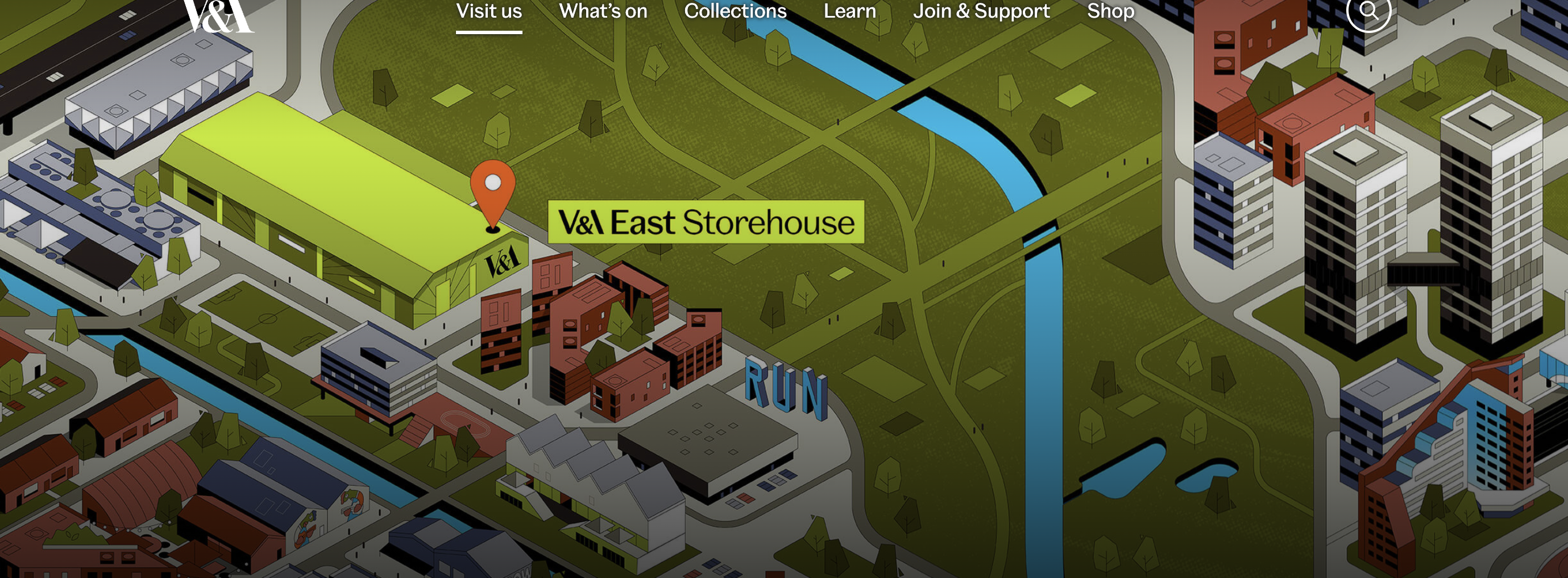
Image source: V&A official website
Let's take a look at these highlights that are different from ordinary museums:
1. Innovative “Order an Object” service: You can make an appointment to view any collection up close. The most popular one at the moment is a pink silk evening dress from a fashion brand in 1954.
2. Giant Exhibits: Six super-large artifacts, including Picasso's stage curtain, are on display, and visitors can observe the details in 360 degrees.
3.100+ micro-curation area: covers topics such as African art and feminism.
4. Transparency in work: There are 4 glass restoration studios, and the restoration process of the collections is open to the public.
In addition, the "David Bowie Center" will open on September 13, 2025, exhibiting 80,000 pieces of rock legend collections.
The opening hours are from 10:00 to 18:00 every day, and extended to 22:00 on Thursdays and Saturdays. Admission is free.

Warehouse-style interior display

Image source: V&A official website David Parry for VA/Shutterstock
"Order" reservation, close-up viewing
Unlike traditional closed collection warehouses, the V&A East Warehouse opens the museum's "backstage" to the public. The new warehouse covers an area of more than 16,000 square meters (equivalent to 30 basketball courts) and houses 250,000 collections, 350,000 books and thousands of archives, covering a wide range of fields including fashion design, architecture, photography, music, performing arts and popular culture.
Most importantly, visitors can not only explore the exhibition area freely, but also watch specific collections up close through appointment services, and achieve in-depth interaction with the artworks. Currently, more than 250 visitors have made appointments to watch the collections up close. From the thousand-year-old fabrics of ancient Egypt, religious paintings from 14th-century Italy, to avant-garde fashion designs, the doors are open to the public without reservation.
The museum emphasized that this is not only an exhibition space, but also a "working museum" - from restoration, photography, curation to collection management, all processes are presented in a transparent manner.

Workers carry and arrange Japanese dolls from before 1910. Source: V&A Mary Ngwu
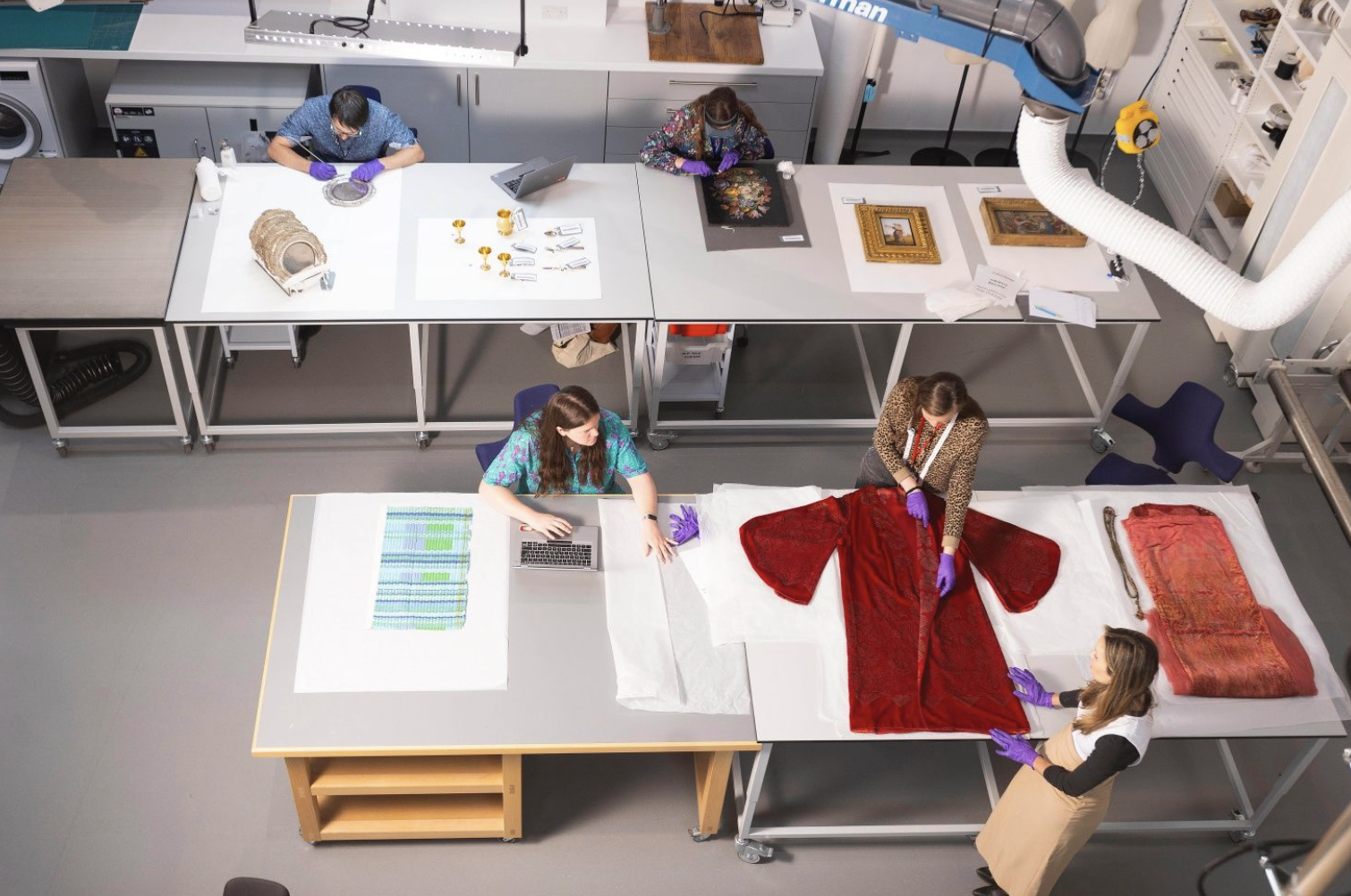
Restoration studio. Visitors can see the staff's daily work through glass or projection.
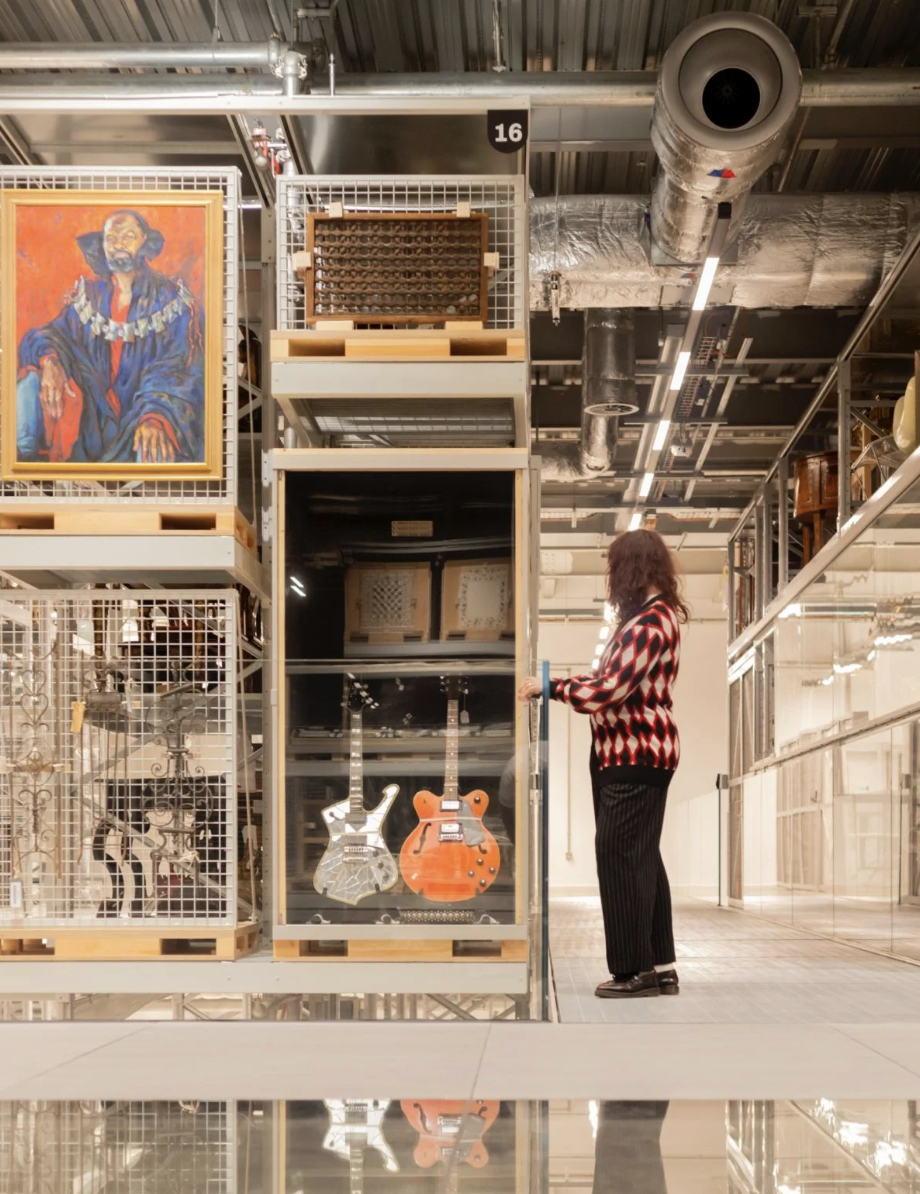
The David Bowie Centre will open on September 13. Source: V&A East
The open “warehouse” makes people feel close
“All you have to do is look up the collection online, and if a piece is in stock, you can add it to your shopping cart of up to five treasures, place your order, and two weeks later, they’ll be ready for your private viewing.”
Jonathan Jones, a commentator for The Guardian, made an on-site visit. "You can choose all kinds of things, from theater posters to Renaissance paintings and even shoes. If the work can be moved, it will be taken to the study room. If not, you can find it yourself." He also recommended the Ajanta Caves murals in the storage room on the first floor. "There I found a towering mural. The damaged part was covered with a layer of something, which added to the mystery of the red and green interweaving. The images of the characters emerged clearly in the mural." This is a full-size replica of the Ajanta Caves murals in India - one of the 300 murals produced by a team from the Bombay School of Art for the Victoria and Albert Museum in the late 19th century.
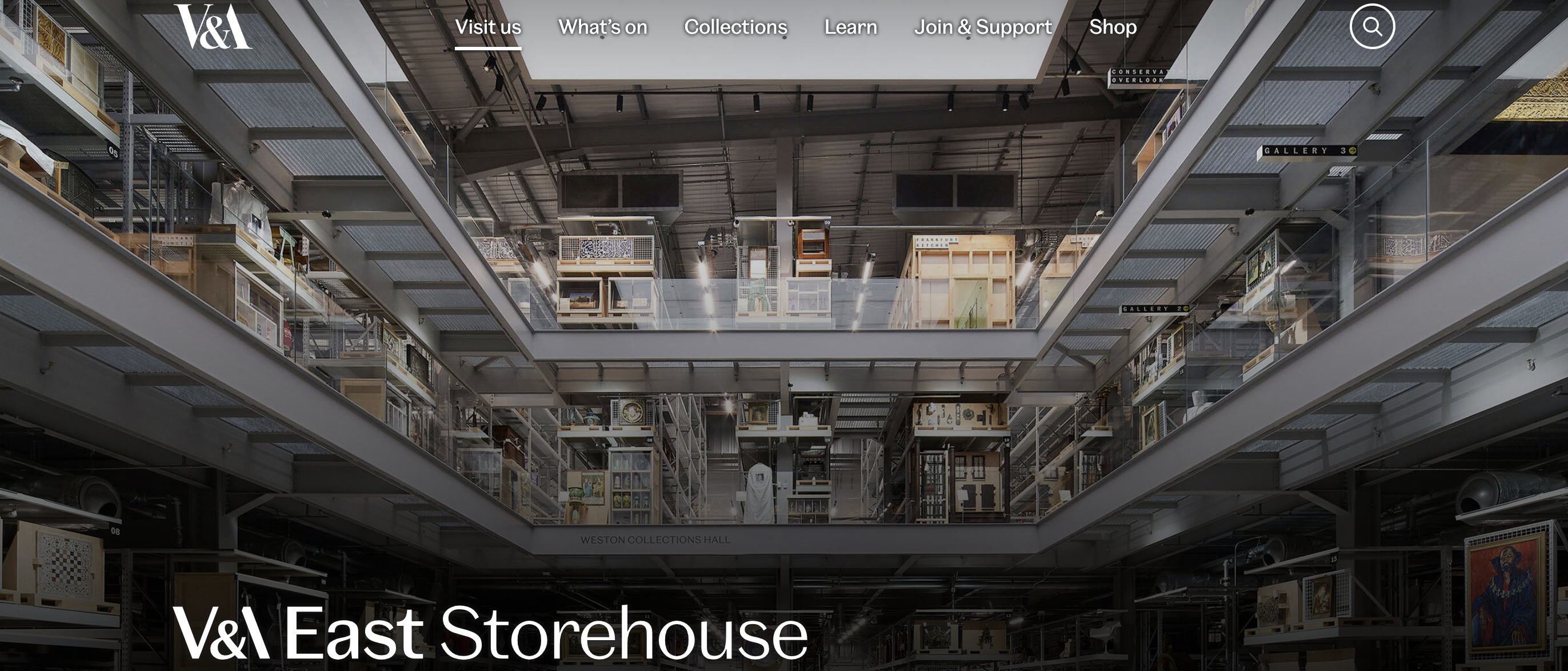
There are public walkways on each floor. Source: V&A East
A major feature of this open "warehouse" is that it makes people feel close to the artwork, as if they really own it. Each floor has a public walkway (at least 1.6 meters wide) with a metal grid floor and glass guardrail design, allowing you to explore the collection while overlooking the ground floor.
Compared to general exhibitions, curators usually decide how to contextualize and display the museum's collections, and they also decide how much of the public collection is on display and how much is hidden in the vaults. "But here, all exhibits can be displayed in a designated display method at the time and place chosen by visitors. If you don't have any ideas, you can just wander around this public curiosity museum and explore the country's Victorian attic." Commentator Jonathan Jones said.
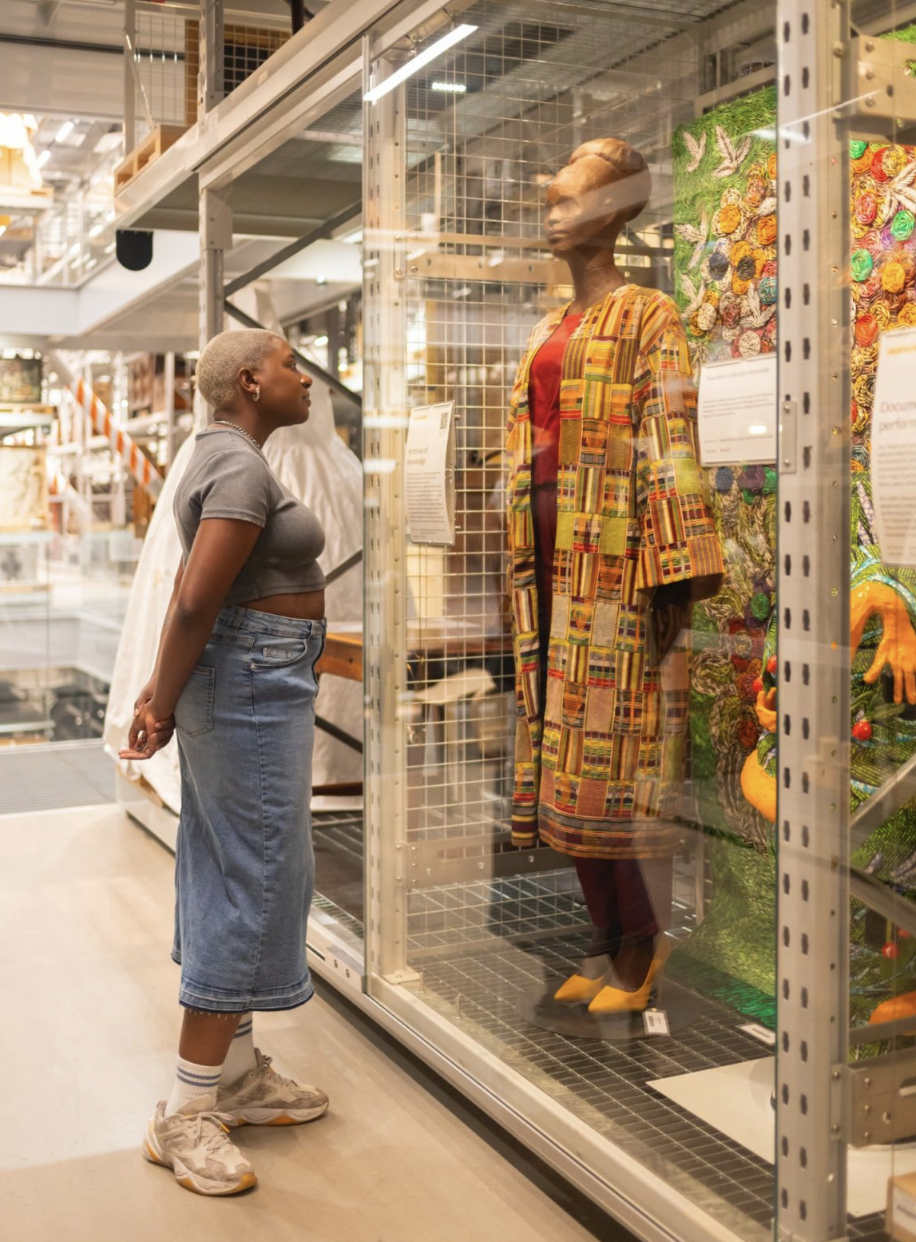
Image source of the miniature exhibition area: V&A East
From behind the scenes to the front stage: Witness the miracle of cultural relic restoration with your own eyes
Walking through the maze-like exhibition hall, more than 100 micro-curated units bring surprises at any time: African tribal masks are juxtaposed with colonial historical materials, and Zaha Hadid's architectural models are in dialogue with the embroidered handkerchiefs of 17th-century girls. There is no fixed route here, and visitors are like exploring a continuously growing art ecosystem.
Behind the glass wall, a restorer is repairing a medieval oil painting with a fine brush; in the next studio, a 3D scanner is digitizing an African statue; during the daily "Object Encounters" period, visitors can even put on white gloves and touch a 400-year-old ancient book under the guidance of researchers. This "living museum" completely breaks the boundary between exhibits and audiences, allowing everyone to participate in the inheritance of civilization.
Tim Reeve, deputy director and chief operating officer of the V&A Museum, once said: "Its completion marks an important step in our mission to promote the public's in-depth contact with the national collection and eliminate the barriers between the public and the national collection. It is not only a place, but also a unique window that allows the audience to experience the mysterious behind-the-scenes of museum collection management and experience the extraordinary magic. Here, through the self-navigated public network, the audience will have a close encounter with the world's top art design and performance collections, as if traveling through every corner of the art hall and feeling every spark of inspiration and creativity."
